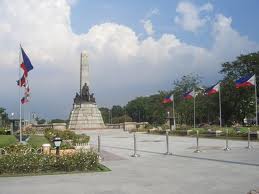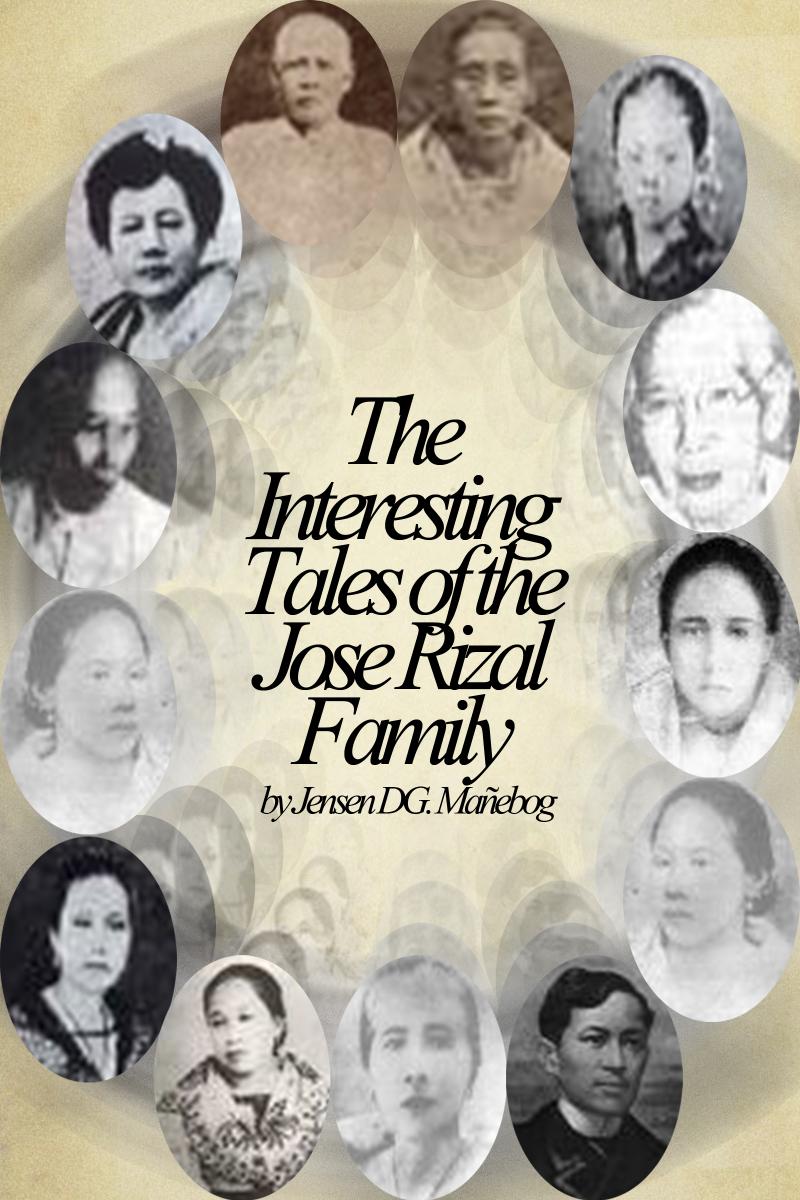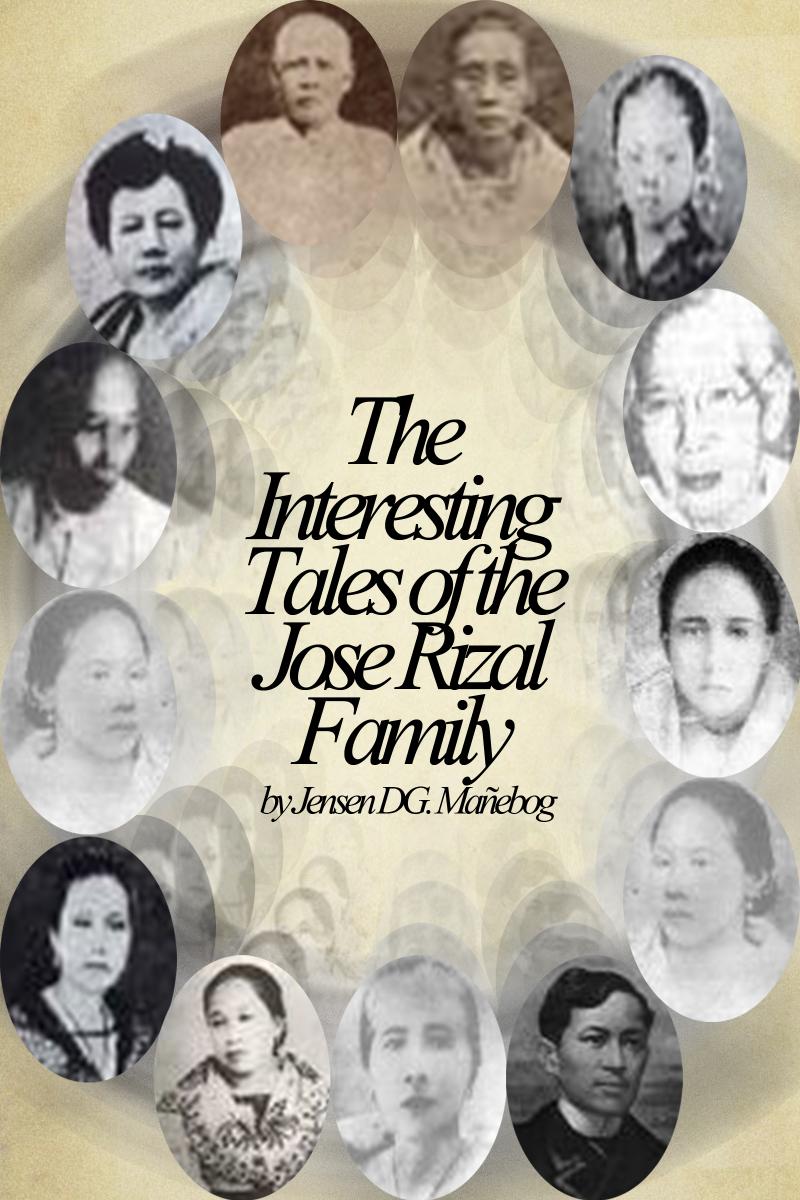Sponsored Links
JOSE RIZAL: From Dapitan to Bagumbayan
 © 2013 by Jensen DG. Mañebog
© 2013 by Jensen DG. MañebogVARIOUS SIGNIFICANT EVENTS happened during Rizal’s Dapitan-to-Manila trip.
Leaving Dapitan for Manila on July 31, 1896, the steamer ‘España’ with Rizal as a passenger made some stopovers in various areas. In Dumaguete, Rizal had visited some friends like a former classmate from Madrid and had cured a sick Guardia Civil captain.
In Cebu, he carried out four operations and gave out prescriptions to other patients. Going to Iloilo, he saw the historical Mactan island. He went shopping and was impressed by the Molo church in Iloilo. The ship then sailed to Capiz, to Romblon, and finally to Manila. (Related: Jose Rizal Tagalog)
In Manila
It is said that as the steamer approached Luzon, there was an attempt by the Katipuneros to help Rizal escape (Bantug, p. 135). The Katipunero Emilio Jacinto, disguising himself as a ship crew member, was supposed to have managed to get close to Rizal, while another Katipunan member, Guillermo Masankay, circled the ship in a boat. Firm in his aim to fulfill his mission in Cuba, Rizal accordingly refused to be rescued by Katipunan’s envoys.
Rizal arrived in Manila on August 6, 1896, a day after the mail boat ‘Isla de Luzon’ had left for Spain, and so he had to stay in Manila until the next steamer arrived.
Afraid that his one-month stay onboard the ship might bring him troubles, he requested the governor general that he (Rizal) be isolated from everyone except his family. The government reacted by transferring him near midnight of the same day to the cruiser ‘Castilla’ docked at Cavite.
Refer these to your siblings/children/younger friends:
HOMEPAGE of Free NAT Reviewers by OurHappySchool.com (Online e-Learning Automated Format)
HOMEPAGE of Interesting ARTICLES on Jose Rizal's LOVE Life, Works, and Writings
To see how our MODERN ELearning Reviewers work, please try this 5-item sample:
On August 19, the Katipunan plot to revolt against the Spanish authorities was discovered through the confession of a certain Teodoro Patiño to Mariano Gíl, Augustinian cura of Tondo. This discovery led to the arrest of many Katipuneros.
The Katipunan led by Bonifacio reacted by convening many of its members and deciding to immediately begin the armed revolt. As a sign of their commitment to the revolution, they tore their cedulas (residence certificates). Katipunan’s first major assault happened on August 30 when the Katipuneros attacked the 100 Spanish soldiers protecting the powder magazine in San Juan.
Because Spanish reinforcements arrived, about 150 Katipuneros were killed and more than 200 were taken prisoner. This bloody encounter in San Juan and the uprisings in other suburban Manila areas on that same day prompted the governor general to proclaim a state of war in Manila and other seven nearby provinces.
On the same day (August 30), Blanco issued letters of recommendation on Rizal’s behalf to Spanish Minister of War and Minister of Colonies with a cover letter clearing Rizal of any connection to the raging revolution. On September 2, he was transported to the ship ‘Isla de Panay.’

Going to Spain
The steamer ‘Isla de Panay’ left Manila for Barcelona the next day. Arriving in Singapore on September 7, Rizal was urged by some Filipinos like his co-passenger Don Pedro Roxas and Singaporean resident Don Manuel Camus to stay in the British-controlled territory.
Trusting Blanco’s words, Rizal refused to stay in Singapore. Without his knowledge however, Blanco and the Ministers of War and the Colonies had been exchanging telegrams, planning his arrest upon reaching Barcelona.
As ‘Isla de Panay’ made a stopover at Port Said, Egypt on September 27, the passengers had known that the uprising in the Philippines got worsen as thousands of Spanish soldiers were dispatched to Manila and many Filipinos were either killed in the battle, or arrested and executed.
Rizal had the feeling that he had already been associated to the Filipino revolution as his co-passengers became aloof to him. A day after, he wrote a letter to Blumentritt informing him that he (Rizal) received an information that Blanco had an order to arrest him. Before reaching Malta on September 30, he was officially ordered to stay in his cabin until further orders from Blanco come.
With Rizal as a prisoner onboard, the ‘Isla de Panay’ anchored at Barcelona on October 3, 1896. He was placed under heavy guard by the then Military Commander of Barcelona, General Eulogio Despujol, the same former governor general who deported Rizal to Dapitan in 1892.
Early in the morning of October 6, he was transported to Monjuich prison-fortress. In the afternoon, he was brought to Despujol who told him that there was an order to ship him (Rizal) back to Manila in the evening.
He was then taken aboard the ship ‘Colon’ which left for Manila at 8 pm. The ship was full of Spanish soldiers and their families who were under orders not to go near or talk to Rizal. Though he was allowed to take walks on deck during the journey, he was locked up and handcuffed before reaching any port.
Arriving in Manila as a prisoner on November 3, 1896, Rizal was detained in Fort Santiago where he had been imprisoned four years ago. To gather pieces of evidence against him, some of his friends, acquaintances, members of the ‘La Liga,’ and even his brother Paciano were tortured and forcibly questioned.
As a preliminary investigation, Rizal underwent a series of interrogation administered by one of the judges, Colonel Francisco Olive—the same military leader who led the troops that forced the Rizal family to vacate their Calamba home in 1890. Those who were coerced to testify against Rizal were not allowed to be cross-examined by the accused.
Rizal is said to have admitted knowing most of those questioned, “though he would deny to the end that he knew either Andres Bonifacio or Apolinario Mabini” (Bantug, p. 139).
Fifteen pieces of documentary evidence were presented—Rizal’s letters, letters of his compatriots like Marcelo del Pilar and Antonio Luna, a poem (Kundiman), a Masonic document, two transcripts of speech of Katipuneros (Emilio Jacinto and Jose Turiano Santiago), and Rizal’s poem ‘A Talisay.’
The testimonial evidence involved the oral testimonies of 13 Filipinos notably including that of La Liga officers like Ambrosio Salavador and Deodato Arellano, and the Katipunero Pio Valenzuela.
Olive submitted the reports to Blanco on November 26 and Captain Rafael Dominguez was assigned as special Judge Advocate in Rizal’s case. Dominguez made a summary of the case and delivered it to Blanco who subsequently sent the papers to Judge Advocate General Don Nicolas Dela Peña.
After examining the case, Peña recommended that (1) Rizal be instantly brought to trial, (2) he must be kept in jail, (3) an order of attachment be issued against his property, and (4) a Spanish army officer, not a civilian lawyer, be permitted to defend him in court.
On December 8, Rizal was given the restricted right to choose his lawyer from a list of 100 Spanish army officers. He chose Lt. Luis Taviel de Andrade who turned out to be the younger brother of his bodyguard-friend in Calamba in 1887, Jose Taviel de Andrade. Three days after (December 11), the formal charges were read to Rizal in his prison cell, with Andrade on his side.
In short, he was accused of being the main organizer and the ‘living soul’ of the revolution having proliferated ideas of rebellion and of founding illegal organizations. He pleaded not guilty to the crime of rebellion and explained that ‘La Liga’, the constitution of which he wrote, was just a civic organization.
On December 13, the day Camilo G. de Polavieja replaced Blanco as governor general, papers of Rizal’s criminal case were sent to Malacañang. Concern about the welfare of his people, Rizal on December 15 wrote a manifesto appealing to the revolutionaries to discontinue the uprising and pursue to attain liberty instead by means of education and of labor. But de la Peña interpreted the manifesto as all the more advocating the spirit of rebellion as it ultimately willed the Filipino liberty. Polavieja thus disallowed to issue Rizal’s manifesto.
On December 26 morning, the Filipino patriot who was once figuratively referred to by Spanish officials as a ‘trapped rat’ appeared in the kangaroo court inside the military building, Cuartel de España. He was tried before seven members of the military court with Lt. Col. Jose Togores Arjona acting as the president.
Judge Advocate Dominguez presented Rizal’s criminal case followed by the lengthy speech of Prosecuting Attorney Enrique de Alcocer.
To appeal to the emotions of the Spanish judges, Alcocer went as far as dramatically mentioning the Spanish soldiers who had died in the Filipino traitorous revolt and discriminately describing Rizal as “a typical ‘Oriental,’ who had presumed to rise from a lower social scale in order to attain powers and positions that could never be his” (Bantug, p. 144). At the end, Alcocer petitioned for a death sentence for Rizal and an indemnity of twenty thousand pesos.
Rizal’s defense counsel, Lt. Andrade, then took the floor and tried his very best to save his client by reading his responsive defense, stressing too that it’s but natural for anyone to yearn for liberty and independence. Afterward, Rizal was allowed to read his complementary defense consisting of logical proofs that he could have not taken part in the revolution and that La Liga was distinct from Katipunan.
He argued, among others, that he even advised the Katipunan emissary (Valenzuela) in Dapitan not to pursue with the plan to revolt; the revolutionists had used his name without his knowledge; he could have escaped either in Dapitan or Singapore if he were guilty; and the civic group La Liga which died out upon his exile did not serve the purpose of the uprising, and he had no knowledge about its reformation.
Lt. Col. Arjona then declared the trial over. Expectedly, the entire defense was indifferently disregarded in Rizal’s mock trial as it instantaneously considered him guilty and unanimously voted for the death sentence.
The trial ended with the reading of the sentence. Doctor Jose Rizal was found guilty. The sentence was death by firing squad.
On December 28, Governor General Polavieja signed the court decision and decreed that the guilty be executed by firing squad at 7 a.m. of December 30, 1896 at Bagumbayan (Luneta). Because Rizal was also required to sign the verdict, he stoically signed his own death sentence ... (Continue reading)
© 2013-present by Jensen DG. Mañebog)
Rizal’s last 25 hours
Jensen DG. Mañebog, the contributor, is a book author and professorial lecturer in the graduate school of a state university in Metro Manila. His unique book on Rizal comprehensively tackles, among others, the respective life of Rizal’s parents, siblings, co-heroes, and girlfriends. (e-mail: jensenismo@gmail.com)
NOTE
To leave comments, click first the ‘Like’ button above (if you have not clicked yet).
Use the 'Share' button below or the ‘Send’ button above to invite friends to read this article.
Try our SEARCH ENGINE (upper right section) for your RESEARCH and other interesting entries.
TAGS: Jose Rizal, Death, Execution, Martyrdom, Bagumbayan, Luneta, Dapitan, History, Philippine Studies, Filipino Heroes; JOSE RIZAL: From Dapitan to Bagumbayan





